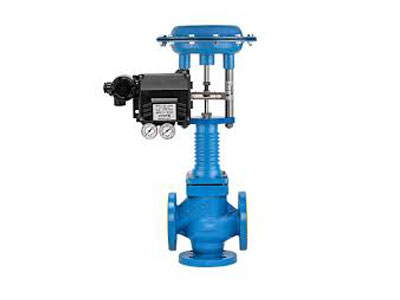What Is The Name Of The Pneumatic Symbol?
Key Takeaway
Pneumatic symbols are standardized icons used in schematics to represent components and functions of pneumatic systems, simplifying their design, documentation, and maintenance. The most commonly used standard for these symbols is ISO 1219-1, which ensures consistency in how components like valves, actuators, and pressure gauges are depicted. For example, valves are typically shown as boxes with ports and flow paths, where the number of ports and operating positions is indicated.
These symbols are drawn in their un-actuated state to show their default position without any external force applied. The depiction includes details such as the number of ports, positions, and type of actuation (manual, electric, or pneumatic). Actuators, often represented by arrows or additional icons, are placed beside the valve symbol to show how the valve changes state when activated. This standardized approach allows engineers and technicians to quickly identify and understand the layout and function of pneumatic systems.
Overview of Pneumatic Symbols in Schematics
Pneumatic symbols serve as a universal language for designers, engineers, and maintenance professionals to understand the functionality of pneumatic systems. In schematics, these symbols help depict how components interact within the system, making it easier to design and troubleshoot systems efficiently. A simple schematic may include symbols for air compressors, valves, cylinders, and filters, among others, all of which contribute to controlling and directing compressed air in the system.
The use of pneumatic symbols in schematics allows for the accurate representation of system flow and control. Understanding these symbols is essential for anyone working with pneumatic systems, ensuring that complex systems are well-designed and easy to interpret.

Common Symbols Used for Pneumatic Valves
In pneumatic systems, various valve types are represented by distinct symbols. Some of the most common symbols for pneumatic valves include:
Two-way valve: Represented by two ports and one or two flow paths. This symbol indicates simple on/off control.
Three-way valve: Typically shown with three ports, controlling airflow to a single actuator or cylinder in two directions.
Four-way valve: Represented by four ports, commonly used to control double-acting cylinders by directing flow to both sides of the piston.
Pressure relief valve: Often depicted as a spring-loaded valve symbol, used to regulate pressure in the system.
Flow control valve: Shown with an adjustable flow path, used to control the speed of actuators.
Each valve has its own unique symbol to depict its role in the pneumatic system, making it easier to understand the function of the entire system.
How to Interpret Pneumatic Symbols
Interpreting pneumatic symbols involves understanding the meaning behind each part of the symbol. For example:
Lines represent the flow paths of air or fluid.
Boxes or circles often represent components like valves, filters, or actuators.
Arrows indicate the direction of airflow or the motion of an actuator.
Dots or numbers identify ports or connections for components.
When interpreting a schematic, it’s essential to follow the standardized conventions so that each symbol is understood in the same way across different systems and by different professionals. Additionally, the symbol’s context in the diagram, including its position relative to other components, is crucial for accurate interpretation.
Importance of Symbols in System Design and Communication
Pneumatic symbols are vital for system design and communication. They ensure that everyone involved in the project, from designers to maintenance workers, understands the system’s layout and functionality. Standardized symbols make it easier to document and discuss pneumatic systems, ensuring consistency and clarity in communication.
In system design, these symbols allow engineers to map out complex pneumatic circuits, considering factors such as airflow, pressure, and control mechanisms. In troubleshooting and maintenance, clear symbols help technicians quickly identify faulty components and determine necessary repairs or adjustments.
Key Differences Between Pneumatic and Hydraulic Symbols
While pneumatic and hydraulic systems share similarities, their symbols differ to reflect the unique characteristics of each system. Key differences include:
Medium: Pneumatic symbols represent air or gas flow, while hydraulic symbols depict liquid flow, typically oil.
Pressure Control: Pneumatic systems usually operate at lower pressures than hydraulic systems, leading to different symbol representations for pressure relief and control components.
Flow Characteristics: Hydraulic symbols often depict more complex flow control mechanisms due to the higher power and fluid density in hydraulic systems, while pneumatic symbols tend to be simpler.
Understanding these differences is essential when working with both types of systems, as the components and functions they represent require different approaches and considerations.
Conclusion
Understanding pneumatic symbols is crucial for effective system design, communication, and troubleshooting. These symbols help professionals across industries create and maintain efficient systems by providing a standardized language for pneumatic components and functions. Recognizing the differences between pneumatic and hydraulic symbols also ensures that systems are correctly designed and maintained, allowing for optimal performance and reliability.

